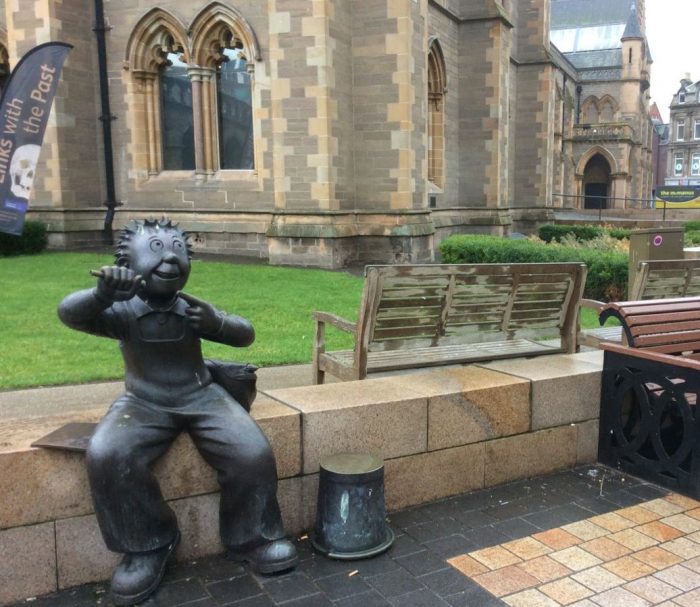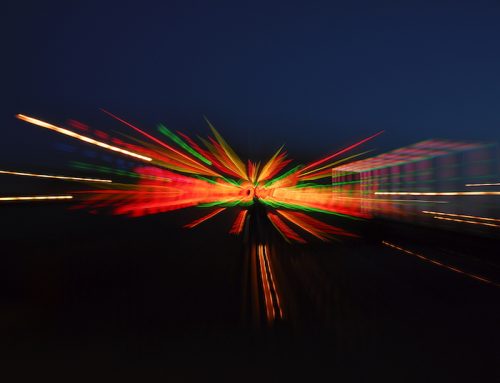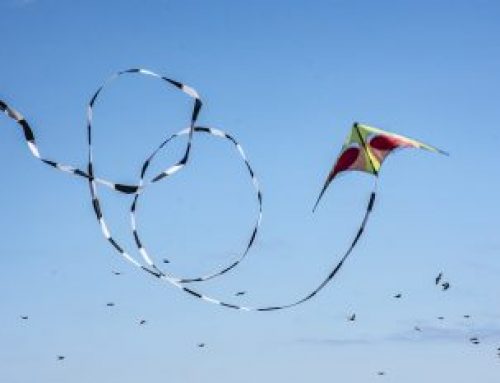
The young dads, a group of single parents, needed somewhere to take their kids at weekends. Why not try the museum, asked the outreach worker. “Oh no”, the young dads say. “That’s for posh people.”
But then, persuaded, they come. They see among the displays Dundee football, factories, familiar faces, and they say, “Wow! This is about us. My dad, my granddad, worked in that mill….”
I choose that quote as one of many stick-in-the-mind illustrations provided by Christine Millar who leads the adventurous, sometimes audacious, Creative Learning team at the McManus, Dundee’s Art Gallery and Museum. It seems to get to the heart of what the ‘People’s Museum’ is about. Here’s the why and how of presenting the dazzling range of art and objects that tell the city’s up and down story to the people who come through the doors – making sure the doors are enticingly, whole-heartedly, wide open to everyone. Especially those who, in the words of another young man, “didn’t realise we were allowed to come in.”
Pause for a moment to explain: this is the first stop on a trail inspired by our Talking Feet podcast conversation with Stephen Allen, curator of the Rip It Up exhibition in the National Museum of Scotland, who talked of ‘bringing stuff that’s more relevant to everyday lives into the wider cultural domain.’
I was meeting Christine Millar to find out what ‘widening access’ means, how museums meet their 21st century obligation to reach a wider cross section of society in our turbulent time.
Up…and down
Looking back I accidently chose an auspicious day to visit Dundee. On 12 April 2019 the city was named Scotland’s best place to live according to the Sunday Times. Visitor numbers were up not just in the dramatic new waterfront V&A, but at nearby Discovery and in city centre McManus and Verdant Works textile museums too. All seemingly part of the ‘dramatic transformation’ of post-industrial Dundee.
Different headlines were to follow. In July, Scotland reported the highest drug-related deaths in Europe with Dundee in second place only to Glasgow for drug fatalities. In a darkening landscape, overshadowed by gathering climate chaos and threats of Brexit apocalypse, sceptical voices question the sustainable benefit of culture-led regeneration. Critics see the risk of iconic buildings like the V&A transforming the city ‘from production to consumption’; the value of creative industry found in marketing rather than making. ‘Who is the city for?’ asks the author James Robertson in a thoughtful response to Chris Silver’s essay on the perils of regeneration in Dundee. Luckily, he adds, the McManus ‘‘a wonderful museum that connects both the local and international, celebrating the two…’ is only a short walk from the V&A.

Raising the tone…and the roof
So that’s where I am returning now, retracing the route from the newly refurbished station to the handsome Victorian building in the city centre. Designed by Sir George Gilbert Scott more than 150 years ago, the monument to Prince Albert was also built to impress: a 19th century civic icon, as historian Chris Whately points out, to raise the intellectual and cultural tone of Dundee.
On the way through the City Square – Caird Hall banners welcoming the annual STUC conference, Desperate Dan astride the pavement, a lone busker belting out Sunshine of Your Love – I see the billboards proclaiming Dundee the best place to live in Scotland.
“How are you finding us so far?” The smiling Visitor Assistant at the door of the McManus responds with an infectious laugh when I comment on the news. Her tone is friendly, confident, welcoming. Meeting and greeting is something of a fine art at the city’s oldest gallery and museum. And it’s one of the reasons I’m here to meet Christine Millar. Visitor numbers were rising steadily even before the V&A opened last September. But it’s not just a simple numbers game. Widening access means sharp focus on what any exhibition is about, who it is for and why anyone will make the effort to see it.
“I don’t have a background in museums,” says Christine ushering me into the bright, busy café by the entrance, “and I regard that as a positive advantage. I’m learning as a punter, with visitors and communities.”
As part of Leisure and Culture Dundee (an arms length council organisation) the McManus has introduced an ambitious new integrated approach to public engagement. Creative Learning is a bridge between curators, collections and visitors. It goes with the more open physical environment created by the architectural renovations of Page/Park ten years ago. The former rabbit warren of narrow corridors opened up to activity rooms and eight spacious galleries combining art and objects. Access in the McManus now is ‘both physical and emotional’. It is a social space with community activities. The resident choir Loadsaweeminsingin’ must surely raise the elegant roof of the Victoria Gallery during the Monday evening ‘community campus’.
Nothing left to chance at McMenace
The Learning and Engagement team works closely with curators and visitors assistants, freelance artists and education specialists. They all have a vital part to play. From selecting treasured exhibits for imaginatively curated exhibitions through marketing communications and press releases to that warm welcome at the door; nothing left to chance. “The welcome is often bedded into the learning programme.”
Re-reading the notes of our conversation, I’m struck by the engaging energy and enthusiasm for what must be a demanding job at the best of times. Words like inquisitive, joy and joyous pop up on the page. The Creative Learning programme covers talks and tours, artist-led workshops, projects with community groups of all ages and abilities. An ‘inquisitive spirit’ of creative curiosity is encouraged, tapping into expert knowledge of curators, exploring a world of wonders to communicate to the public: ‘How do you do that?’ Getting the right message involves translating the sometimes impenetrable language that can create invisible barriers to social inclusion; relentlessly asking “who is it for?”
“I am the cracked record at meetings. I get a bit ‘tigery’ sometimes”, says Christine not looking at all like a tiger over our cooling cups of coffee. This tightly integrated approach worked a treat with the highly successful Bash Street Kids Back at the McMenace in 2018 when the Creative Learning team collaborated with DC Thomson Beano Studios and Dundee High School to produce a record-breaking exhibition. (So successful, the McManus was shortlisted this year for a prestigious Museums and Heritage marketing award alongside big UK institutions like the Natural History Museum in recognition of its impact on the ‘scale and reach’ of visitor numbers). It seemed a natural hit for local families in the DC Thomson heartland but a rigorous attention to detail took it much further. As a result, ‘ the most visited comics exhibition in the UK attracted over 80,000 visitors’

All this achieved with a small team of staff. And we didn’t dwell on this year’s council cuts which further tighten financial constraints on all museum funding. Recently introduced audio guides will add a new revenue stream, though Christine sees limits to digital interpretation “It has a use but it’s not a golden nugget. Parents say ‘we like to talk to our children’, visiting the museum is a social experience.”
The real can do spirit
‘Can do’ is a newly loaded expression since the arrival of Boris Johnson and his No Deal Brexit machismo. But ‘can do’ means something different to Christine Millar in developing a creatively enabling space between visitors and museum staff. It’s not just about the McManus. As a freelance artist, a Glaswegian graduating from Duncan of Jordanstone (her background is in community art) she was amazed to discover the number of organisations in the city who speak to each other.
“Dundee thinks big for a wee city. We’re not territorial, we don’t see competition as a threat. We work better together and the V&A offers fantastic potential with more people coming to the city.” There’s a caveat. This potential has to be grown well, but informality is the Dundonian way “and that allows us to play to our strengths.”
Free entry is essential to widening access. To Christine, the primary purpose of the museum is to allow people – young parents, pensioners, students, community groups – to come little and often. “To explore at leisure and your own pace, you need to be able to come back and look at that object every day. If we make it difficult for people to visit, what’s the point of being here?”
Which brings us back to the beginning. There’s a punch line to that young dads story. “So they come and see what the McManus has to offer and then the museum changes from something ‘we can do’ with our kids to ‘this is something we NEED to do with our kids.’”

What’s on now at the McManus? Check here
The McManus, first stop on a trail in search of the ’emotional’ museum’, is also published on Sceptical Scot culture section. You can hear how it was inspired by Stephen Allen, curator of the 2018 Rip It Up exhibition in the National Museum of Scotland on our Talking Feet podcast.
By Fay Young, Walking Heads research director






Leave A Comment